Plan Your Visit
Directions
Address: 26 Kanrin, Inuyama, Aichi 484-0081 JAPAN

Days Closed
The Japan Monkey Centre is closed every Tuesday and Wednesday; the centre will also be closed on some additional weekdays (although it is open on all Japanese Public holidays). Please check the calendar before you visit: days when the JMC is closed to the public are shaded in grey .
Opening Hours
Getting to Meitetsu Inuyama Station
From Meitetsu-Nagoya Station:
About 25 min by Rapid Limited Express (Kaisoku Tokkyu) or Limited Express (Tokkyu)
train. The fare costs 550 yen per adult (280 yen per child aged 6-12)
From Central Japan International Airport Station:
About 55 min by μSKY Limited Express (Myu Sukai) train.
Getting to the Japan Monkey Centre from Meitetsu Inuyama Station
By Bus (5 Min):
From the East exit of the station, take a bus marked ‘リトルワールド・モンキーパーク線' (route towards
‘Little World’ and the Monkey Park) and get off at ‘モンキーパーク' (The Monkey Park, the first
stop). The fare is 170 yen per adult (90 yen per child aged 6-12.)
By Taxi (5 Min):
The taxi fare is about 800 yen.
From the Meishin Expressway Komaki I.C. or the Nagoya Expressway Komaki Northern I.C.: take National Route 41; about 20 min.
From Komaki Higashi I.C.: drive via Owari Parkway; about 10 min
The parking fee is 1,000 yen.
Please note: the car park is public, but is shared with the Japan Monkey Park. Tell the parking
attendant that you are visiting the "Japan Monkey Centre (zoo)", they will guide you to the car
parking area closest to the JMC entrance.
For further info, see Map and Transportation Guide @ INUYAMA Tourists Information Center Website
Admission Prices
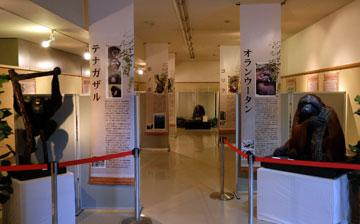
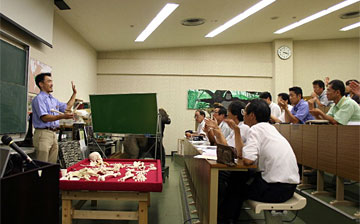
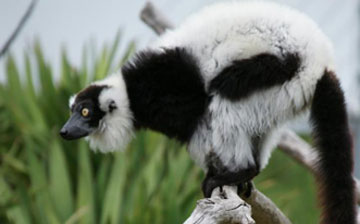
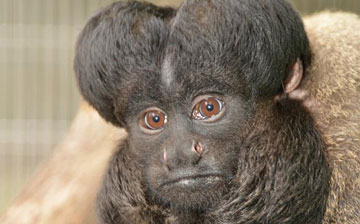
Visitor Center
At the Visitor Centre, we have regular exhibitions including taxidermist specimens, skeletons of nonhuman primates, and a touch screen monitor to perform a memory test for chimpanzees at the Primate Research Institute, Kyoto University. We also hold special exhibitions on a wide variety of different themes.
Madagascar House
This outdoor enclosure is in the form of an island ringed by a moat, allowing the inhabitants to roam freely. Living on the island-enclosure are different species of lemurs found in the wild only in Madagascar: brown lemurs, black lemurs, and ruffed lemurs.
South American House
Here you can see tiny monkeys such as marmosets and tamarins. They live in an indoor enclosure maintained at a temperature of about 25 ℃ to simulate tropical jungle conditions. In the outdoor enclosure, you can meet saki monkeys, woolly monkeys, spider monkeys, and capuchins. In a special room where day and night light is reversed, nocturnal owl monkeys can be seen moving about during our daytime.
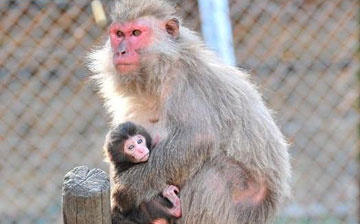
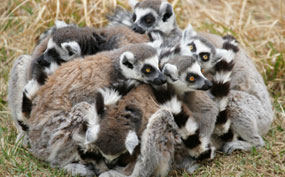
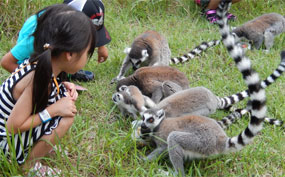
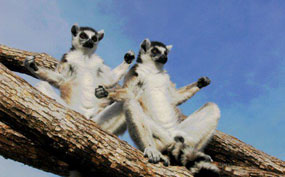
Asian House
Different species of leafeaters: Francois’s lutongs and silver lutongs can be seen here, along with macaques that are distributed in wide area of Asia. It includes long-tailed macaques, rhesus macaques, southern pig-tailed macaques, toque macaques, bonnet macaques, Tibetan macaques, lion-tailed macaques, and Japanese macaques (also known as snow monkeys).
Wao Land
One of JMC’s must-see attractions are the free-ranging ring-tailed lemurs, offering a close encounter with them.
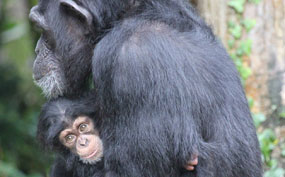
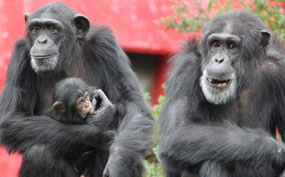
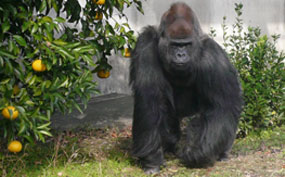
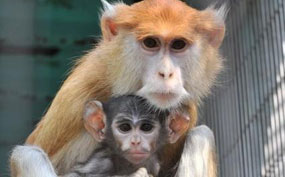
African Center
Another star attraction is chimpanzees. You can also see a gorilla searching for his food, parts of which the keepers hide earlier in various places within the enclosure. Here you can also watch mandrills and nocturnal monkeys including pottos and Senegal lesser galagos.
African House
This house shows brightly-colored monkeys including Schmidt's guenons, moustached guenon, Buettikofer’s guenon and De Brazza’s guenons. Colobus monkeys presents their strikingly beautiful black and white markings. You can also meet goldenbellied mangabey, northern talapoin monkeys, Sykes’ monkey, patas monkeys, savannah monkeys, hamadryas baboons and Barbary macaques here.
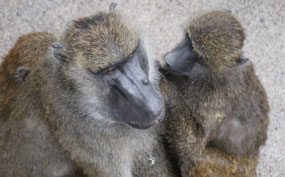
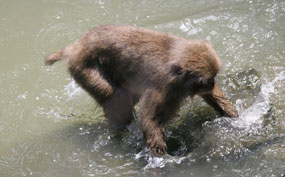
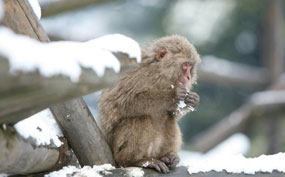
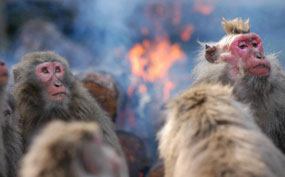
Baboon Castle
Over seventy Anubis baboons can be watched from this rooftop viewing deck.
Monkey Valley
From this observation platform, you can see about 130 Japanese Yaku-macaques, showing the behavior of washing sweet potatoes and other food in a pond. They put the sweet potatoes inside the water and rub them against rocks. Sweet potato washing in Japanese macaques was first observed in a natural troop in Koshima Islet, Japan. Though rubbing behavior is quite common in macaques, the behavior of rubbing objects in water is rare. It can be easily observed during the monkeys’ feeding time. You may also see other interesting behaviors like Saru-dango, tool use, and noise making with stones.
From the late December until the end of January, on weekends and holidays, our Japanese Yaku-macaques warm themselves by a real bonfire. The tradition of lighting bonfires for the monkeys began in 1959, after Japanese Yaku-macaques were observed to gather around the fires lit by staff to burn fallen trees following the Isewan Typhoon. This new ‘bonfireseason’ soon became established as a well-known and cherished attraction of JMC.
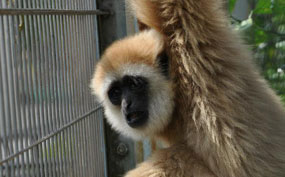
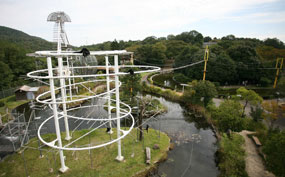
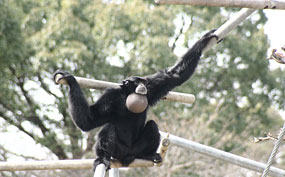
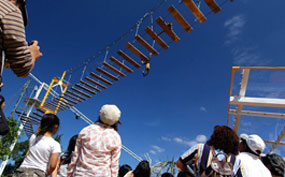
Gibbons' House
Here you can see three different species of gibbons from Southeast Asia: pileated gibbons, white-handed gibbons, and Mueller's gibbons.
Monkey Scramble
Here, you can enjoy siamangs brachiating (moving by swinging arm by arm) at a height of 15 meters ( Big Loop). Very impressing are also the Geoffroy's spider monkeys moving back and forth across a 100- meter-long suspension bridge (Monkey Skyway). Don't forget to look up to see one of our greatest attractions ? and keep an eye out for monkey excrements! (Dangerous Zone)
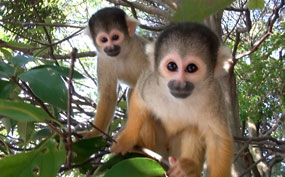
Squirrel Monkey Land
One of our highlights is a close encounter with Bolivian squirrel monkeys, moving freely within the dense undergrowth on a small island. Of all their food, Bolivian squirrel monkeys love to eat insects most. So, they spend a large amount of time foraging for insects. It is rare for any insects that have strayed into the Squirrel Monkey Land to ever reach the adult stage.

